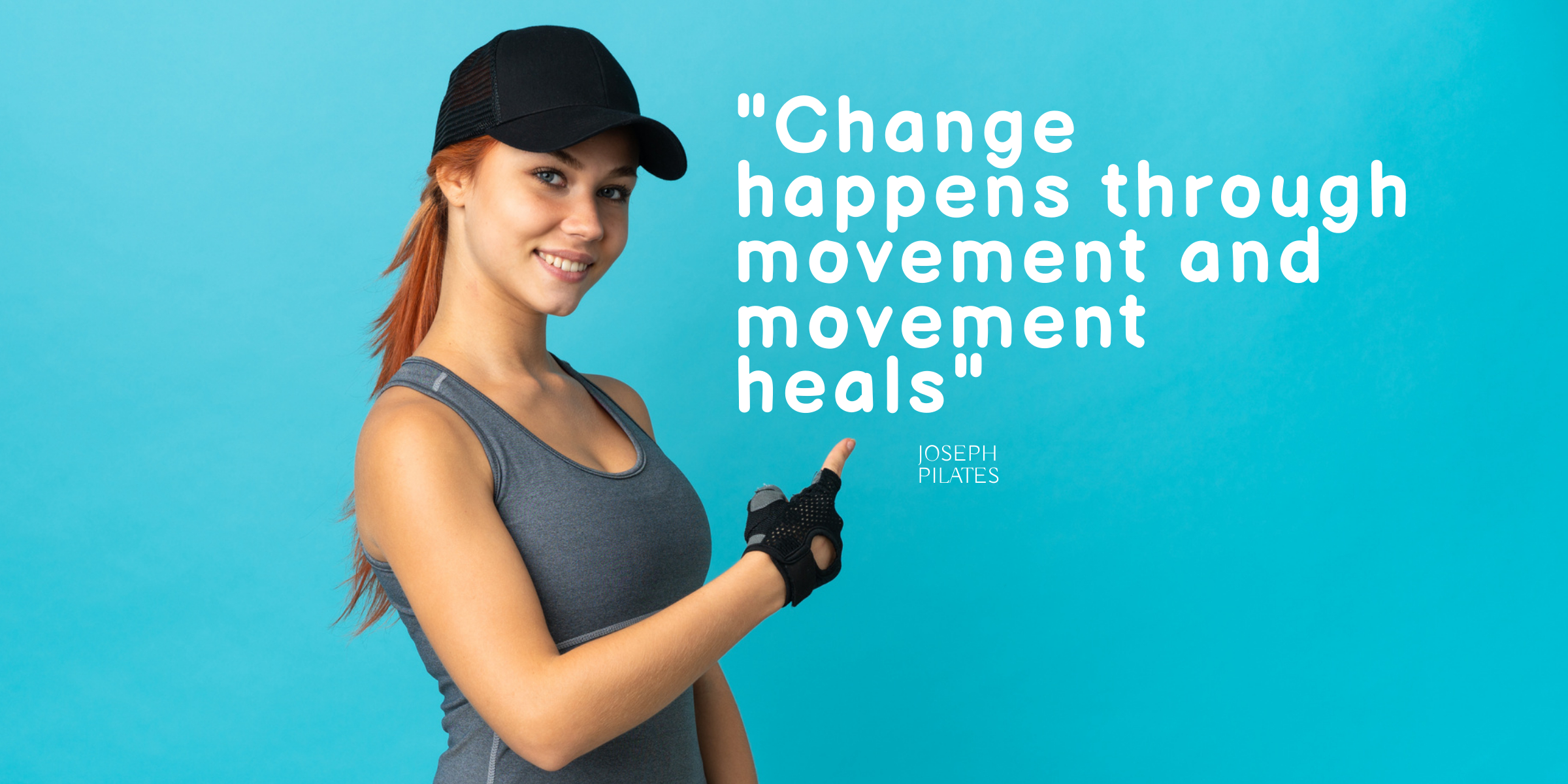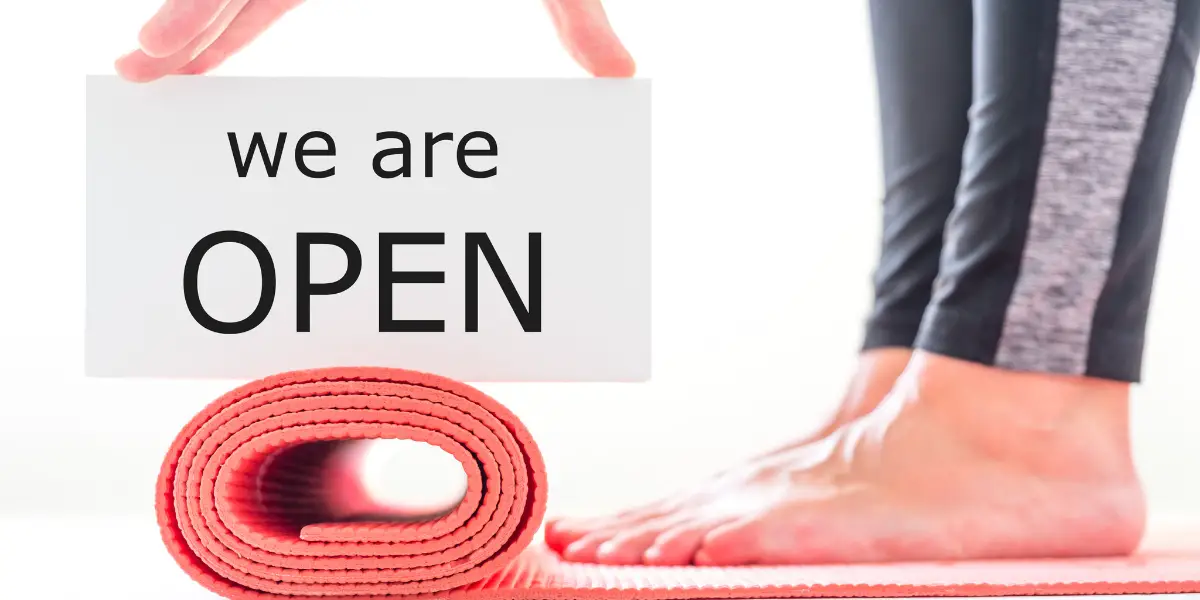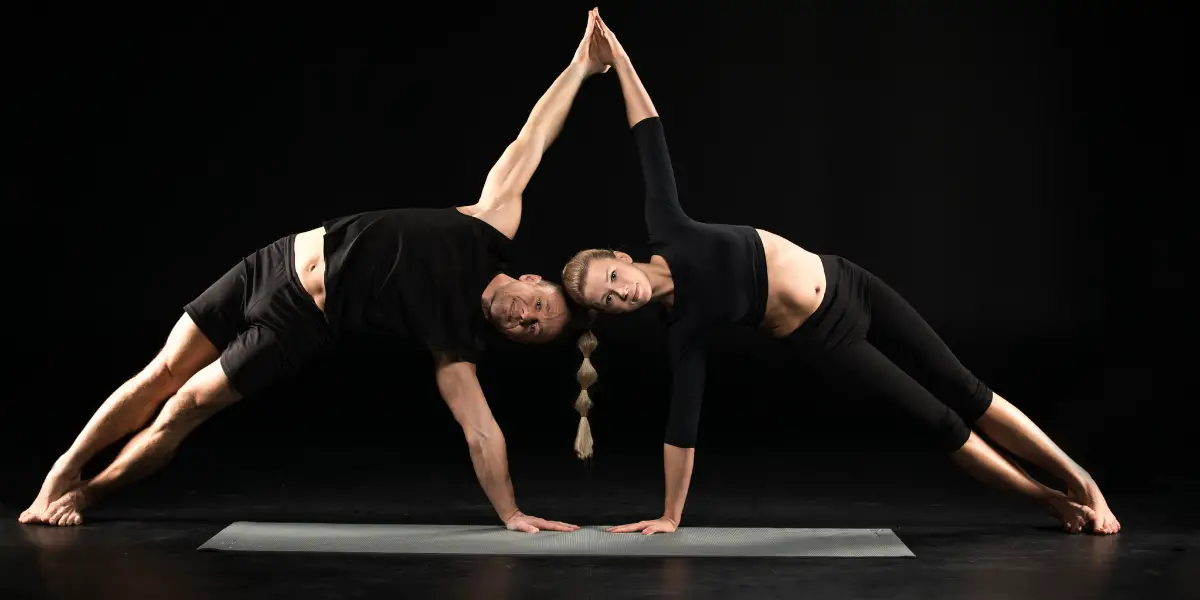Pilates and self-care go hand in hand, providing numerous benefits to both the body and mind. As a certified Pilates instructor, I’ve seen firsthand the positive impact that this type of exercise can have on people’s lives, so how does Pilates benefit well being?
Pilates can have a positive impact on one’s physical and mental wellbeing. It helps improve posture, balance, flexibility, and strength. Emotionally, it promotes mindfulness which encourages being in the moment and encourages self-awareness. By increasing flexibility and strength of the body, Pilates helps to reduce stress and anxiety.
The combination of physical activity and mental focus that Pilates offers makes it an ideal form of exercise for taking care of yourself. In this article, I’ll explore the mind-body benefits of Pilates and how it can help you achieve a healthier lifestyle.
The first thing to know about Pilates is that it is not just a workout – it is an entire system of movement and exercise designed to promote physical and mental wellbeing. Unlike other forms of exercise, Pilates focuses on improving posture, flexibility, balance and strength through precise movements rather than relying solely on repetitions or machines. This holistic approach helps to improve overall physical health while also cultivating mindfulness and self-awareness.
Through regular practice, Pilates can help you become more aware of your body’s alignment, patterns of movement, as well as any existing imbalances or areas in need of strengthening.
All movements are done with control so that you can tune into your body’s signals – something which is essential for self-care. By listening to your body, you can find ways to move more efficiently while avoiding injury or overexertion.
In the next section I’ll discuss the many specific health benefits associated with practicing Pilates regularly – from increased flexibility to improved posture – so stay tuned!
Physiological Benefits of Pilates
Did you know that Pilates has been scientifically proven to improve both physical and mental health? It’s true.
“These results indicate that Pilates exercise is a substantial method in improving flexibility performance.”
Published in Education Quarterly Reviews | 2021
“We confirm that a convenient Pilates exercise intervention can significantly improve muscle strength and trunk flexibility in women.”
Published in Health Care for Women International | 2015
“The Pilates method is effective for improving flexibility, as well as muscle resistance, balance and proprioception.”
PILATES E FLEXIBILIDADE: UMA REVISÃO SISTEMÁTICA
Here are three ways Pilates impacts your physiological health:
- Improves posture and core strength
- Increases muscle tone, coordination and balance
- Alleviates chronic pain in the back, neck, shoulders, hips and knees
As a Pilates instructor, it never ceases to amaze me how much of an impact this type of exercise can have on the body. Not only does it strengthen your muscles and improve your posture, but it can also alleviate chronic pain. With regular practice of Pilates exercises, you’ll be able to move more freely with less discomfort. All of these benefits make it easier for you to live a healthy lifestyle and take care of yourself.
By dedicating time each week to do some form of self-care – whether that’s yoga, stretching or a brisk walk – you’re investing in your overall physical health. The more mindful movements you do with intention and awareness, the better off your body will be in the long run. Now let’s explore some of the mental benefits associated with practicing Pilates!
Mental Benefits of Pilates
As we’ve seen, Pilates provides many physical benefits. Now let’s move onto the mental benefits.
Pilates can help cultivate a sense of inner peace. Through regular practice, you can learn to take your mind off external situations and calm yourself with deep breathing techniques and mindfulness. This can allow you to become more aware of your body and its signals, allowing you to better manage stress levels.
Change happens through movement and movement heals.
Joseph Pilates
The physical activity of Pilates also produces endorphins in the brain that can cause a positive feeling of well-being, helping to reduce anxiety and depression. As you gain strength, flexibility, and balance through Pilates, it can lead to improved self-confidence and self-esteem. All these mental benefits contribute to improving overall wellbeing, making it easier for you to handle life’s challenges.
The practice of Pilates offers numerous rewards beyond physical health: enhanced mental health is one of them. With this in mind, let’s now explore some of the benefits for stress management that come from a regular Pilates practice.
Benefits For Stress Management
Pilates is an excellent form of exercise for stress management. It encourages a mindful approach to movement, allowing practitioners to tune into their bodies and become present in the moment. With this connection between mind and body, practitioners can release tension and feel more grounded. Through proper breathing techniques, relaxation can be achieved and the body can restore balance.
Pilates also helps people develop body awareness, which enables them to recognize signs of stress before it reaches unmanageable levels.
The slow, controlled movements of Pilates exercises are designed to reduce stress on the body while providing an effective workout that promotes both physical and mental strength. Each exercise works multiple muscle groups at once creating strength, increased flexibility and coordination.
Practitioners are encouraged to focus on execution rather than speed or intensity of the exercises so they can let go of any external pressures they may be facing and concentrate on their own progress within the practice.
Being mindful during a Pilates session helps practitioners shift from a state of stress to one of relaxation with improved posture and overall well-being. Connecting with one’s breath during practice helps cultivate calmness in all aspects of life by allowing us to slow down and take time for ourselves as we focus inwardly instead of outwardly stresses. Moving forward from here, we will explore self-care practices for mental health that complement our Pilates practice.
Self-Care Practices For Mental Health
The mind-body connection is an integral part of Pilates and self-care. In order to ensure a healthy balance between the two, it’s important to practice self-care techniques that are designed to improve mental health. Here are some great ways to get started.
Firstly, mindfulness can be extremely beneficial in managing stress and anxiety. Mindfulness involves focusing on the present moment without judgement, so that you can become aware of your thoughts and feelings as they arise. This can help you to stay grounded when times are tough and allow you to take action if needed.
Secondly, engaging in physical activity is another great way to support your emotional wellbeing. Exercise releases endorphins which help to improve mood and reduce stress levels. Pilates is a great form of exercise for this purpose because it focuses on both building strength and improving flexibility, while also providing an opportunity for mindful movement.
Finally, connecting with your community is also key for maintaining good mental health. Connecting with friends, family or even strangers allows us to receive emotional support when we need it most and build meaningful relationships with those around us.
It can also provide a sense of purpose which helps us stay motivated and inspired through difficult times. To take full advantage of these benefits, try reaching out regularly to those who matter most in your life!
Proper Form and Alignment
Now that you’ve discovered the amazing exercises Pilates has to offer, it’s time to talk about proper form and alignment. This is the crucial step in ensuring that each exercise is done correctly—and safely! To make sure you get all of the benefits from this mind-body practice, it is essential to make sure your posture and body position are correct.
The first thing to remember when performing Pilates exercises is to keep your core engaged throughout each movement.
This helps support the spine, which will not only help you execute each exercise effectively but also reduce any risk of injury. When exercising, be mindful of the tension in your muscles—they should be strong yet relaxed. If they are too tight or too loose, then your posture and form may suffer as a result.
Finally, focus on moving with intention. By being mindful while executing each movement, you will ensure proper alignment and reduce any chance of straining any area of your body.
As a Pilates instructor, I cannot stress enough how important proper form and alignment are when performing each exercise!
With proper technique, you can truly unlock the full potential of Pilates for both mental and physical self-care. Let’s move on now to discuss what type of equipment is needed for pilates at home…
Equipment Needed For Pilates At Home
Pilates is a low-impact exercise system that requires minimal equipment to practice. To start off, you’ll need a mat and comfortable clothing. You can also get creative with what you have at home such as towels, pillows and blankets.
Here’s a checklist of the main pieces of equipment needed for Pilates at home:
- Mat: A good quality Pilates mat is essential for cushioning your joints during exercises and helping to keep your body in proper alignment.
- Thickness – Look for mats that are thick enough to support your posture while still being flexible enough to roll up when not in use.
- Size – Choose one that fits your body size and provides enough space for all movements.
- Resistance Bands: Resistance bands can be used to add an extra challenge to your Pilates routine by increasing the intensity of exercises. They also help improve circulation, flexibility, core stability and balance.
- Foam Rollers: Foam rollers are great for releasing tension in tight muscles before or after a workout. They provide deep tissue massage which helps promote better posture, improved flexibility and range of motion throughout the body.
- Stability Ball: Stability balls help engage smaller stabilizing muscles in the body which can aid in improving balance, coordination and overall strength.
In order to make sure you’re doing Pilates properly and safely it’s important to seek out instruction from a qualified instructor.
Finding a Qualified Instructor
As you move forward with your Pilates practice, you may find that it’s time to bring in an expert. Finding a qualified instructor can be daunting, but it’s worth the effort. Below is an overview of what to look for when selecting a Pilates instructor.
| Qualities | Description | Examples |
|---|---|---|
| Experience | Must have certifications and practice experience | Certified with the American Council on Exercise (ACE), Certified with Balanced Body or Stott Pilates, Practiced Pilates for 5+ years, Participated in continuing education courses |
| Compassion & Understanding | Must be patient and understanding of individual needs | Gives modifications based on individual physical abilities and limitations, Allows students to work at their own pace, Adjusts instruction to suit different learning styles |
| Knowledgeable & Creative | Must have a thorough knowledge of anatomy and posture alignment as well as creative teaching methods | Tailors classes based on student goals and skill level, Incorporates different techniques into each class, Uses visual aids or props to make instruction easier to understand |
Finding the right instructor can make all the difference in your practice. It’s important to research instructors ahead of time and read reviews from previous students.
Consider asking these 8 important questions when meeting an instructor for the first time.
You should also consider taking a few classes with various instructors before settling on one so that you can get a better sense of their teaching style and how well it meshes with yours. With careful consideration and research, you can find an instructor who will help take your Pilates journey to new heights!
Frequently Asked Questions
Is Pilates Beneficial For People With Chronic Pain?
Pilates is a great way to improve overall physical and mental health, but what about people with chronic pain? Is pilates beneficial for them too? The answer is yes! Pilates can offer a range of benefits to those with chronic pain. Here are just a few:
- Improved posture: Pilates strengthens the core muscles, which supports proper posture and reduces the strain on the joints associated with chronic pain.
- Reduced stress: Regular practice of pilates helps to reduce tension in the body and mind, which can be beneficial for those with chronic pain.
- More energy: With increased strength and flexibility from Pilates, many people with chronic pain report having more energy throughout the day.
The gentle movements of Pilates make it an ideal exercise for those suffering from chronic pain. It helps to increase strength and flexibility while being gentle on joints that may already be painful or weakened due to injury or illness. Plus, the calming effects of Pilates can help reduce stress levels while increasing relaxation as well.
Pilates offers a variety of benefits to all individuals, especially those who suffer from chronic pain due to injury or illness. From improved posture and increased energy levels to reduced stress, it’s no surprise why so many are turning to this form of exercise for their self-care needs.
How Can Pilates Help Improve Posture?
Pilates is a great way to improve your posture. It’s an exercise form that uses low-impact movements to strengthen and stretch the body, promote balance and flexibility, and help correct poor posture. Pilates can be tailored towards different needs and abilities, making it suitable for people of all ages and fitness levels.
Whether you’re looking to improve your posture or just want to feel better in your own skin, Pilates can help. It’s a great way to strengthen your core muscles, which support your spine and improve your overall posture. Pilates also teaches proper alignment of the spine, which helps reduce strain on the neck and back muscles as well as reduce back pain.
In addition to helping with posture, Pilates can increase joint mobility, reduce stress levels, and promote mental clarity. A regular practice can help you become more mindful of how you move throughout the day and make small changes that have big effects on posture over time. Practicing pilates regularly will not only help you look better but can also help you feel better too!
What Is The Best Way To Combine Pilates With Other Forms Of Exercise?
Combining Pilates with other forms of exercise is a great way to maximize your health and fitness routine. Pilates is known for its ability to improve posture, strengthen muscles, and increase flexibility – all important aspects of maintaining good physical health. When combined with another form of exercise, such as cardio or strength training, you get the added benefit of a well-rounded workout.
When it comes to combining Pilates with other exercises, there are several different options available. If you’re looking for an aerobic workout that also helps build muscle and flexibility, try combining Pilates with light weightlifting or bodyweight exercises like push-ups and planks. For those looking for more intense workouts, you can combine mat Pilates with high-intensity interval training (HIIT) or circuit training.
No matter what type of workout you choose to do, remember that proper form is key when doing any kind of exercise. Pilates requires precise movements and engaging the correct muscles to ensure safe and effective results. Make sure you take the time to learn the correct technique from a qualified instructor before attempting any new routines. With the right combination of exercises, you’ll be able to reap all the amazing benefits of both Pilates and other forms of exercise!
Conclusion
Pilates is a wonderful form of exercise that can bring powerful mind-body benefits when practiced regularly. At the end of each Pilates session, I always find myself feeling relaxed and energized, almost to the point of euphoria! After just a few weeks, I noticed an incredible improvement in my posture and overall sense of wellbeing.
It’s important to remember that everyone’s body is different, so it’s best to consult with a qualified instructor before starting any new form of exercise. With the right guidance and practice, Pilates can be a valuable tool for self-care. With regular sessions tailored to your individual needs, you can experience improved strength, flexibility and body awareness.
My advice? Don’t wait another moment – start your journey into the transformative world of Pilates today! You’ll be amazed at how quickly you reap its extraordinary physical and mental rewards; it truly is an exercise like no other!
Sources
https://www.semanticscholar.org/paper/9f2c6359105d4cb198da5931446419c01a0d30b9
https://www.semanticscholar.org/paper/7451db7b3b4bbb85eb15cbbd7757cadc77ab429d
https://informedrelaxation.com/mindfulness-techniques-for-stress/




